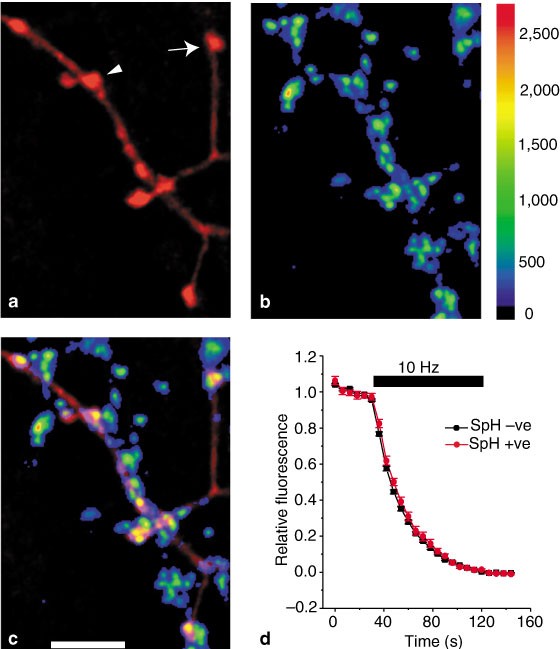
Real-time measurements of vesicle-SNARE recycling in synapses of the central nervous system
- Select a language for the TTS:
- UK English Female
- UK English Male
- US English Female
- US English Male
- Australian Female
- Australian Male
- Language selected: (auto detect) - EN
Play all audios:
Following the fusion of synaptic vesicles with the presynaptic plasma membrane of nerve terminals by the process of exocytosis, synaptic-vesicle components are recycled to replenish the
vesicle pool. Here we use a pH-sensitive green fluorescent protein to measure the residence time of VAMP, a vesicle-associated SNARE protein important for membrane fusion, on the surfaces of
synaptic terminals of hippocampal neurons following exocytosis. The time course of VAMP retrieval depends linearly on the amount of VAMP that is added to the plasma membrane, with retrieval
occurring between about 4 seconds and 90 seconds after exocytosis, and newly internalized vesicles are rapidly acidified. These data are well described by a model in which endocytosis
appears to be saturable, but proceeds with an initial maximum velocity of about one vesicle per second. We also find that, following exocytosis, a portion of the newly inserted VAMP appears
on the surface of the axon.
We thank J. Rothman for providing the ecliptic synapto-pHluorin construct, T. McGraw and F. Maxfield for useful discussions, and M. Delemos for technical assistance. This work was supported
by the NIH, grant NS24692 (T.A.R.). T.A.R. is an Alfred P. Sloan Research fellow.
Correspondence and requests for materials should be addressed to T.A.R.
Department of Biochemistry, Weill Medical College of Cornell University, 1300 York Avenue, New York , 10021, New York, USA
Anyone you share the following link with will be able to read this content: